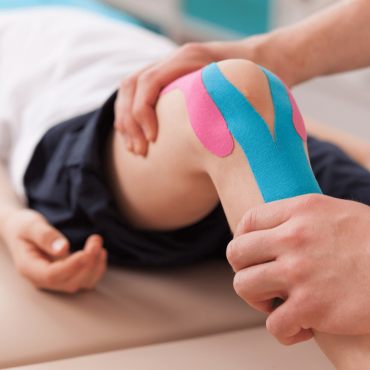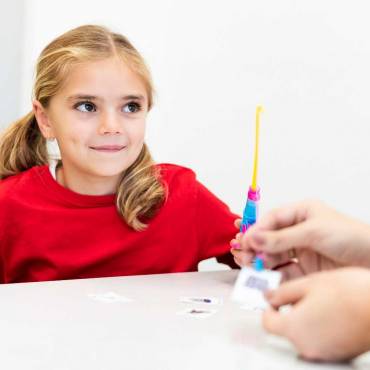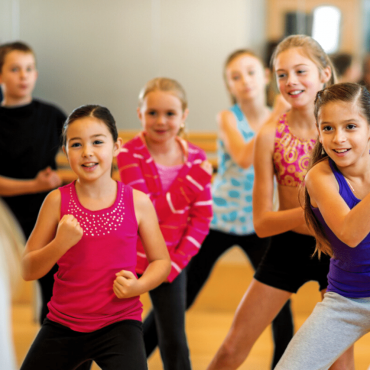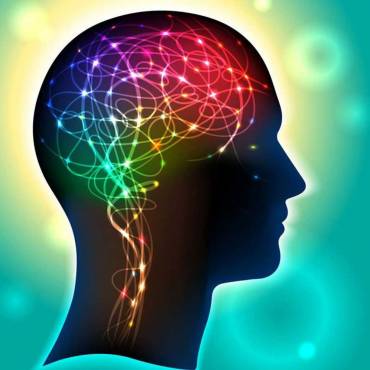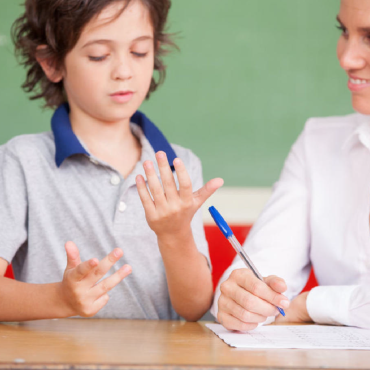OCCUPATIONAL THERAPY
“Occupational therapy is a client-centred health profession concerned with promoting health and well being through occupation. The primary goal of occupational therapy is to enable people to participate in the activities of everyday life.Occupational therapists achieve this outcome by working with people and communities to enhance their ability to engage in the occupations they want to, need to, or are expected to do, or by modifying the occupation or the environment to better support their occupational engagement.” (World Federation of Occupational Therapists 2012)
Occupational therapy is a form of therapy that uses the activities (occupations) of daily life therapeutically. Occupational therapy practitioners enable people of all ages to live life to its fullest by helping them promote health, and prevent injury, illness, or disability. Each therapeutic program is based on the same philosophy, which is also the main therapeutic tool: occupations. An occupation is any activity that is meaningful and purposeful, in which the individual is actively involved, gaining experience and knowledge.
Occupational therapy can be beneficial for children who have difficulty participating in daily activities, or occupations that are appropriate for their age. These occupations cover all areas of a child’s life, such as:
- The activities of daily living (eg sleep, feeding, self-care)
- The activities of daily living (eg sleep, feeding, self-care)
- Play
- Social participation and interaction
- Participation in educational / academic processes
- The activities of daily living (eg sleep, feeding, self-care)
Occupational therapy will look at:
- Comprehensive assessments using standardised assessment tools
- Fine motor skills, such as the ability to skillfully manipulate tools and objects with their hands, manual dexterity and hand-eye coordination.
- Visual and visual motor skills, such as the ability to distinguish similarities and differences in visual representations, to identify details in images, to recognize something even partially visible, to understand the parts that constitute an image, to be able to make simple constructions or puzzles.
- Handwriting skills, for example, the ability to manipulate writing / painting tools, colouring in within the lines, produc- ing recognisable drawings such as a house or a person, copying shapes / letters / words / sentences accurately, orga- nizing written text into page space and writing speed.
- Cognitive skills, such as maintaining an appropriate level of alertness for each activity, focusing and duration of atten- tion, organizing time, orientation in space and time, short visual and auditory memory, knowledge of basic concepts, logical thinking.
- Teacher consultation:
- Educate teachers to enhance the child’s academic programme
- Teacher training workshops
Occupational therapy practitioners have a holistic perspective, in which the intervention is client centered and adapted to fit the client’s needs. It is an evidence-based practice deeply rooted in science. “In occupational therapy, occupations refer to the everyday activities that people do as individuals, in families and with communities to occupy time and bring meaning and purpose to life. Occupations include things people need to, want to and are expected to do.” – WFOT, 2019.
OCCUPATIONAL THERAPY SERVICES INCLUDE:
- Gross Motor skills, such as the ability to design a new motor activity, have good control of their body, balance and coor- dination.
- Customised intervention to improve the person’s ability to perform daily activities and reach their goals
- An outcomes evaluation to ensure that the goals are being met and/or make changes to the intervention plan
- Provide home treatment programs to aid in the therapy process
- Increase understanding of sensory integration
- Improve awareness of “play” and its role in gross/fine motor skill development
- Teacher training workshops
ASSESSMENT TOOLS USED:
Bruininks-Oseretsky Test
of Motor Proficiency,
Second Edition (BOT-2)
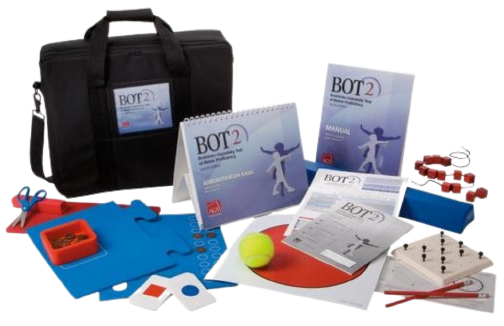
The Bruininks-Oseretsky Test of Motor Proficiency, Second Edition (BOT-2) is an individually administered test that uses engaging, goal-directed activities to measure a wide array of motor skills in individuals aged 4 through 21. The BOT-2 uses a subtest and composite structure that highlights motor performance in the broad functional areas of stability, mobility, strength, coordination, and object manipulation.
Features 8 subtests that assess:
Miller Function &
Participation Scales (MfunPS)
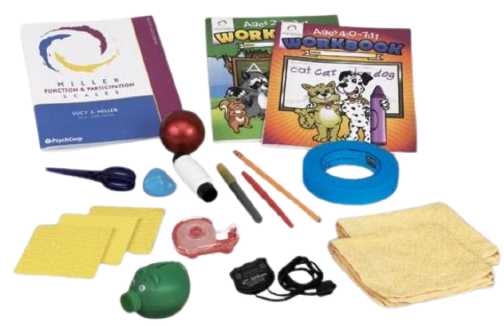
The M-Fun measures a child’s fine, visual and gross motor skills and attempts to determine the impact of these skills on his or her participation in home and school activities.
The developmental assessment tool to:
- Assess functional motor skills in natural contexts
- Measure performance and participation in 2.6 – 7.11 year olds
- Link performance of functional activities to neuromotor foundational abilities
- Use as an outcome measure to monitor progress over time
Area of Assessment:
Bayley Scales of Infant
and Toddler Development, Third Edition (Bayley-III)
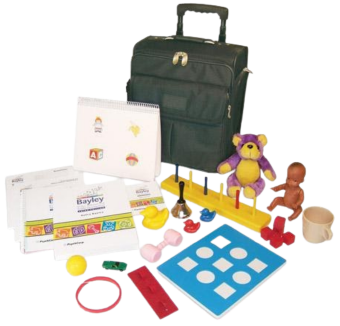
The Bayley Scales of Infant Development (Bayley-III) are recognised internationally as one of the most comprehensive
tools to assess children from as young as one month old (Age Range: 1 month to 42 months).
Children are assessed in the five key developmental domains of cognition, language, social-emotional, motor and adap-
tive behaviour. Bayley-III identifies infant and toddler strengths and competencies, as well as their weakness.
Developmental Test
of Visual Perception, Third Edition (DTVP-3)

Assess visual perception and visual-motor integration skills in children from 4 years to 12 years 11 months. Shown to be unbiased relative to race, gender and handedness.
The DTVP-3 has five subtests:
Developmental Test
of Visual Perception – Adolescent and Adult (DTVP-A)
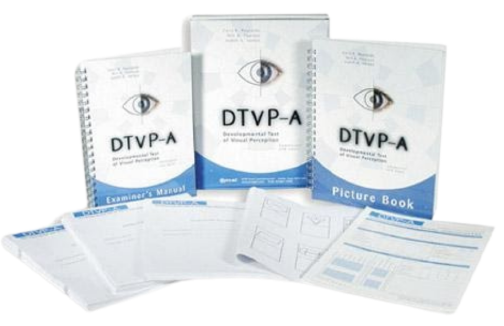
Age Range: 11 years to 74 years and 11 months
The DTVP-A is a battery of six subtests that measure different but interrelated visual-perceptual and visual-motor abilities. It is especially useful in the evaluation of the neuropsychological integrity of TBI and stroke patients where right-hemisphere function may be an issue.
The subtests and indexes also will suggest areas of emphasis in cognitive and fine motor rehabilitation. The DTVP-A is particularly useful in distinguishing true visual-perceptual deficits from problems solely with complex eye-hand or perceptual-motor actions.
The DTVP-A may also assist in differential diagnosis of various of the dementias in elderly patients, providing a baseline for normal aging changes in perception and perceptual-motor skills against which the referred patient may be referenced.
The DTVP-A has five subtests:
Adaptive Behavior
Assessment System (ABAS-3) – Third Edition
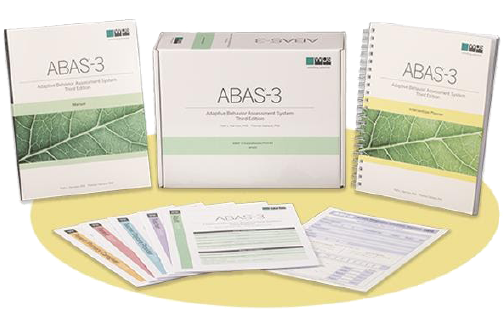
Provides a complete assessment of adaptive skills across the life span
Age Range: Birth to 89 years
It is particularly useful for evaluating those with developmental delays, autism spectrum disorder, intellectual disability, learning disabilities, neuropsychological disorders, and sensory or physical impairments.
The ABAS-3 covers three broad domains (conceptual, social and practical). Within these domains, it assesses 10 skill areas. Items focus on practical, everyday activities required to function, meet environmental demands, care for oneself, and interact with others effectively and independently.
Forms: Parent/Primary Caregiver Form (Ages 0–5), Teacher/Daycare Provider Form (Ages 2–5), Parent Form (Ages 5–21), Teacher Form (Ages 5–21) and Adult Form (Ages 16–89)
Test of Visual-Perceptual
Skills (TVPS-4) – Fourth Edition
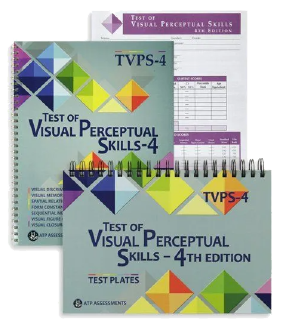
Age Range: 5-0 through 21-11
Assesses visual-perceptual strengths and weaknesses, using a response format suitable for all children, including those with disabilities.
Purpose: to give a reliable measure of a child’s visual perceptual abilities without requiring motor involvement.
Scales & Forms
Sensory Profile 2™
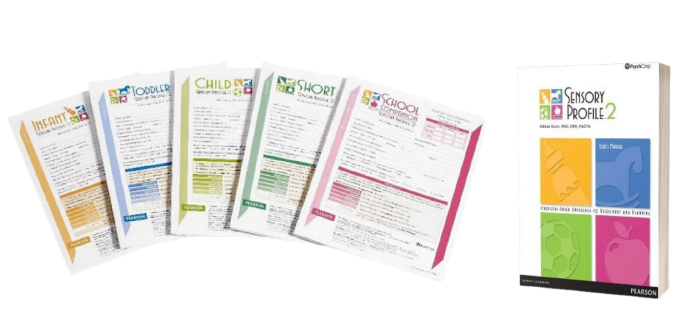
The Sensory Profile™ 2 provides you with standardised tools to help evaluate a child’s sensory processing patterns in the context of home, school and community-based activities.
It features a series of significantly revised questionnaires to evaluate a child’s unique sensory processing patterns from a position of strengths, providing deeper insight to help you customise the next steps of intervention. The forms are completed by caregivers and teachers, who are in the strongest position to observe the child’s response to sensory interactions that occur throughout the day.
- Infant Sensory Profile 2
- Toddler Sensory Profile 2
- Child Sensory Profile 2
- Short Sensory Profile 2
- School Companion Sensory Profile 2
Adolescent / Adult
Sensory Profile™
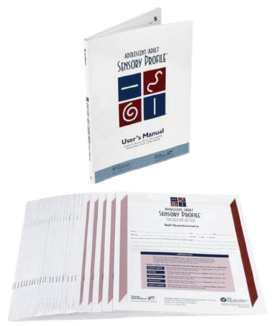
Age Range: 11 years and older
The Adolescent/Adult Sensory Profile is designed as a trait measure of sensory processing patterns and effects on functional performance. An individual answers questions regarding how he or she generally responds to sensations, as opposed to how he or she responds at any given time. This enables the instrument to capture the more stable and enduring sensory processing preferences of an individual, providing greater understanding about why individuals engage in particular behaviours and why they prefer certain environments and experiences.
Observations Based
on Sensory Integration Theory – 2002 by Erna Blanche, PhD, OTR, FAOTA
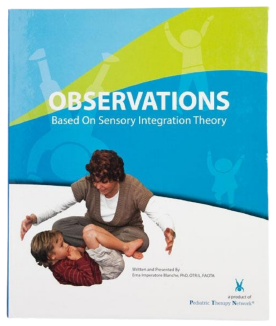
Ages: Children of varying ages and skill levels
Observes and interprets children’s behavior from a sensory integration perspective.
Skilled observations of sensory integrative dysfunction allow therapists to discreetly analyze a child’s behavior and skills and, in turn, develop more effective intervention plans.
Έντυπο αξιολόγησης γραπτής
απόδοσης παιδιών δημοτικού σχολείου «Γράψιμο-Γραφή- Γραπτή Επίδοση» (Αλεξάνδρου Στράτος 2016)
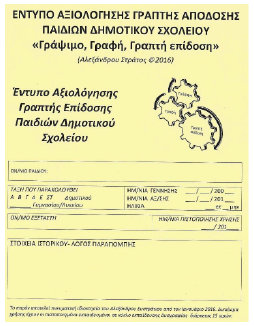
Το έντυπο αξιολόγησης γραπτής απόδοσης παιδιών Δημοτικού Σχολείου του κ. Αλεξάνδρου, εξετάζει τόσο τα κινητικά πρότυπα όσο και τα πρότυπα γραφής και γραφοκινητικότητας των παιδιών μέσω των μηχανισμών χρήσης των εργαλείων γραφής αλλά και της γραπτής επίδοσης των παιδιών. Το έντυπο αποτελείται από 25 ερωτήσεις τονικο-φασικών προτύπων (αισθητικο-κινητική επίδοση) γραψίματος και από 25 ερωτήσεις ποιότητας γραπτού λόγου (γνωστική επίδοση).


